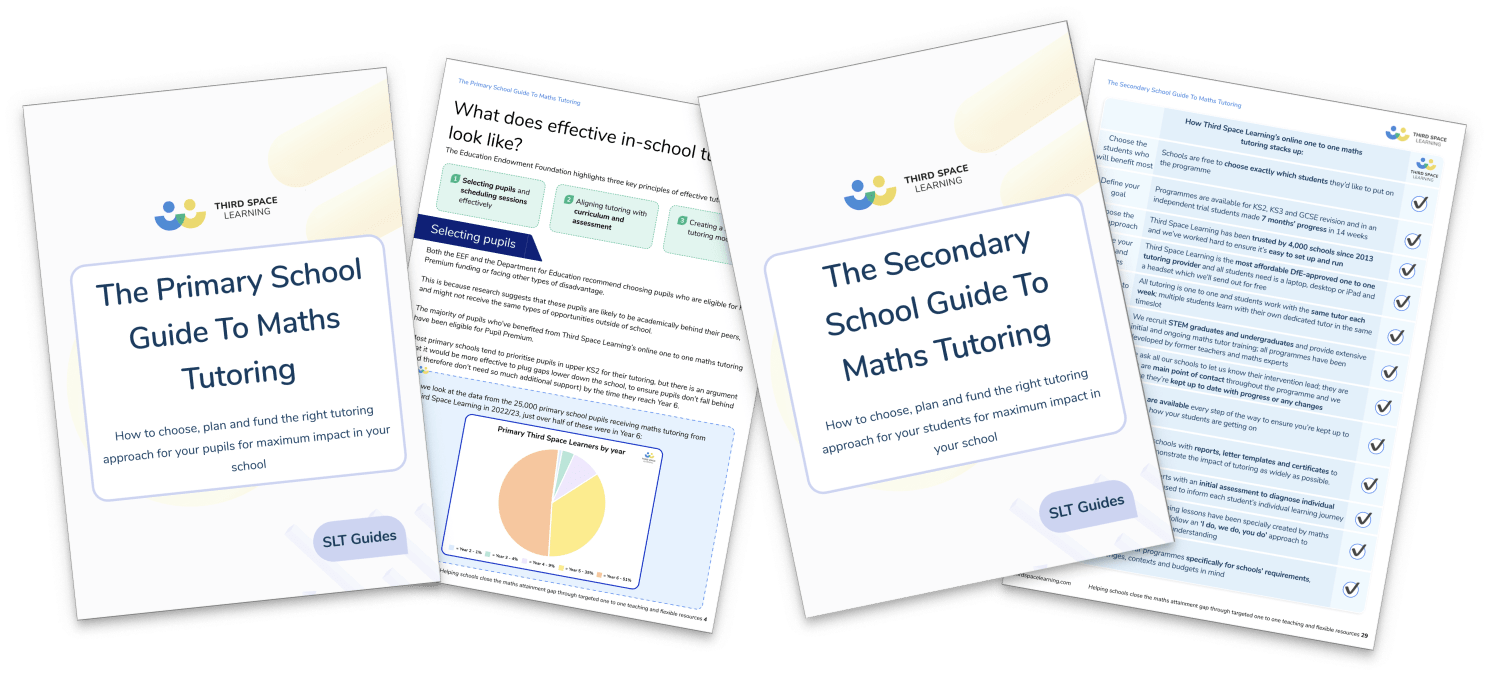What We’ve Learned About Online Teaching: The 6 Ingredients Of A Successful Online Maths Lesson
Online teaching during the time of the coronavirus pandemic and national lockdown is no longer something that just ‘online teachers’ or online maths tutors do. All educators have had to make the leap this year into online teaching, whatever their concerns or lack of confidence.
And they’ve done it brilliantly.
Whether they’ve chosen asynchronous recorded teaching moments, webchats up close to your webcam and 30 other hopeful 9 year olds emerging from a sea of GoogleMeet backgrounds, or full on live online classes, the variety and versatility of teaching has been astounding.
There is no right way to do remote teaching as we are pleased to see Ofsted have now acknowledged. There are as many different methods as schools and the approach you take will depend so much on your school context.
At Third Space, we’ve joined teachers throughout the past 12 months in teaching thousands of Key Stage 2 pupils online maths lessons. The only difference is that we’d been doing this before Covid-19 hit and expect to be doing it long afterwards.
Because the teaching is online, it’s also meant children receiving online tuition for maths from us have been able to continue their sessions at home even while their school is closed.
The Ultimate Guide to Maths Tutoring
Learn how to choose, plan and fund the right tutoring approach for your students for maximum impact. Includes individual primary and secondary guides.
Download Free Now!Online teaching doesn’t happen overnight
We’ve made our own mistakes in online teaching, as we know many teachers will have done too. Not remembering to unmute yourself is the least of it!
However after 6 years in the online education business, we’ve also developed an effective way to ensure that every pupil whatever their starting point is able to learn and enjoy maths with our tutors.
So, if you’re looking to make improvements to your own online teaching, or are just interested to see how our online tutoring works, here are some helpful (we hope) online teaching tips that we’ve put together.
Our speciality is in personalised maths tuition so inevitably that’s where we draw our examples from.
The following tips are given from the starting point that each child has access to a laptop or online device, an internet connection and, ideally a headset. We know this is not the case for many children and are in awe of the steps the teachers and headteachers of the pupils we are teaching online (often those in receipt of pupils premium) have gone to to achieve this. A focus on access for all has to be the first priority before you can even consider how to improve your online teaching.
Pupil success depends on more than just their academic progress in learning
We understand that for a pupil to really make similar gains from online teaching as they would from face-to-face teaching, we need to factor in the impact and relevance of three domains to learning:
- Cognitive domain – making associations between new and known information (the traditionally accepted ‘thinking’ in learning.
- Metacognitive domain – thinking about your own thought processes.
- Affective domain – related to your emotions and motivations around learning.
We believe that these three domains have to be developed together to maximise pupil learning. In many ways, it is difficult to achieve development in one without developing the others.
For example if your pupil is in a bad mood or very upset (i.e. their affective domain is off-tilt), it will be more difficult for them to achieve cognitive and metacognitive success as they may not engage with the content.
Tip 1: Pay attention to pupils’ attitude as much as to their attainment
When we strive for and assess student success we look at how it is being achieved both in their ‘attainment’ and their ‘attitude’. These two components are fed by activities in the cognitive and metacognitive domain (attainment) and affective and metacognitive domain (attitude).
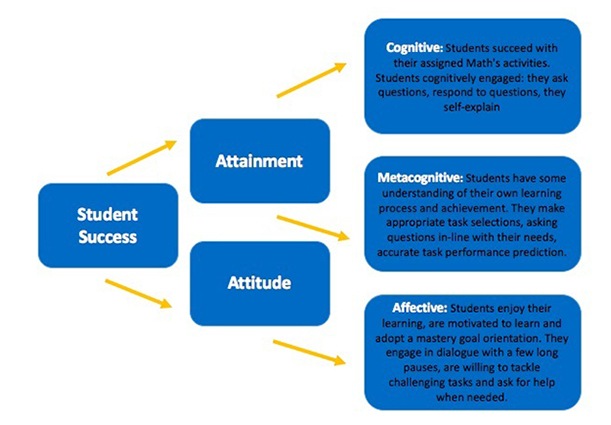
Both buckets are equally important to ensure pupils can learn to the best of their ability, even if the methods we use to develop them may be different.
Our tutors are trained on teaching with regard to all three domains as part of their pedagogy. Our virtual classroom and online learning environment is designed to maximise opportunities for all three.
Our Curriculum Design Team (all former teachers) created a tutor training programme with this philosophy in mind, so that our tutors effectively address all three learning domains.
The virtual classroom also provides an effective learning environment for tutors to incorporate metacognitive activities such as encouraging children to reflect on what they know and what they need to know.
And in our reporting data we can directly track the impact that starting to enjoy their online maths lessons with us can have. It’s huge.
When you’re doing your lesson planning it’s worth remembering as you would in the classroom that the children will be arriving with very different prior engagement levels in maths or even stress in their homes.
Nurturing the affective domain is just as important as making sure you have the slides well structured or are ready to admit the children when the lesson starts.
“Those attitudes we had been seeing, those children who’d thought they just couldn’t do it, were changing. All of a sudden they’re now going home and saying to their parents that they can do it! Their confidence has grown so much. They now challenge themselves and no longer fear maths! They’re able to work through problem-solving questions very meticulously and have clear strategies to support them. That’s all come from their work with their Third Space tutors, who obviously take it at the right pace for each individual child.“
Tracey Hart, Assistant Headteacher, Aveley Primary School, Essex.
Tip 2: Make the work in online teaching meaningful
When you’re teaching in the classroom it can be easy to keep pupils engaged with a topic; there are plenty of activities that will provide them with a visual or physical stimulus to draw them in.
It’s a little more difficult online. Your pool of activities is smaller, as are the ways in which pupils can interact with them (and with one another).
To combat this, we encourage you to add more context into your lessons. Embed the learning in real-world applications, related to what pupils might encounter at home.
At Third Space Learning we are lucky enough to teach online providing real time synchronous lessons to a single child at a time. This means true personalisation: we can go at the child’s own pace and we can focus on their individual child’s attainment level or gaps in maths. It also means we are able to focus some of the reasoning and problem solving parts of the lessons to an individual’s interests and experience, helping to make it more relevant and meaningful to them.
With a class of 30 while you can’t create entirely personal lesson plans and activities you can support children to understand how their learning is relevant to their everyday lives.
We find that older students in particular respond well to this.
Read more: Why is maths important?
Tip 3: Be open to alternative assessment opportunities
Teaching online provides another wrinkle to the learning process that isn’t normally encountered in the classroom – how to assess a child’s progress.
With classwork and homework both more difficult to set up (and to some extent enforce), many of your usual methods of checking that pupils have understood the topic being covered are lost.
Not to mention that you’ll likely have to contend with variable attendance, meaning pupils will often have very different levels of understanding at each point in the learning journey.
Wherever possible try to make use of the functionality open to you – whether that’s a simple hands up response or typing something in the chat, or as some schools are doing – using interactive touch screen questioning during live lessons.
Read more Ofsted’s remote learning research
One advantage of the remote learning environment is that you may be able to focus more closely on each child, and find more time to work one-on-one with them to recognise their strengths and weaknesses and help them develop.
This means you can more easily work through the Assessment for Learning (AfL) cycle with each pupil:
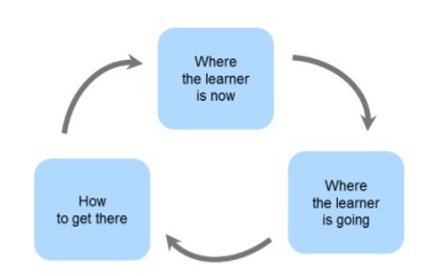
The following tips relate to how you can maximise the AfL sequence through cognitive and metacognitive techniques
Tip 4: Verbalise everything, and encourage pupils to do the same
Unless you’re only using video calling software, you’re likely to need to share your screen with your pupil(s) while teaching online. This means both you and they will be unable to pick up on the sorts of visual cues you’re used to.
You’ll need to be able to work out when a pupil is struggling through other means, primarily by listening.
To facilitate this, increase how verbal both you and your pupil(s) are. Third Space tutors spend a significant amount of time in lessons asking probing and prompting questions of pupils to better gauge their level of understanding, and their thought processes. We also provide prompting questions in lesson slides to achieve much the same.
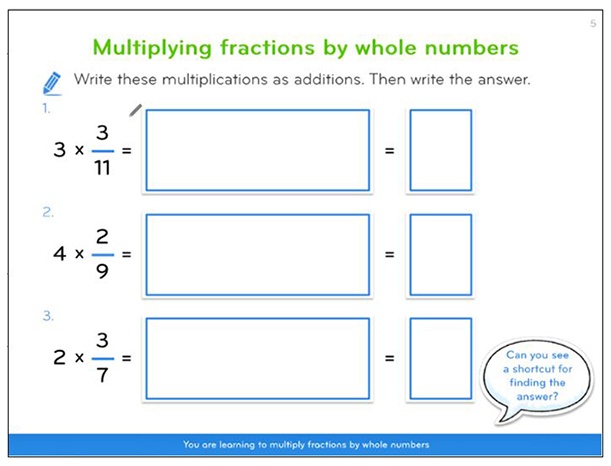
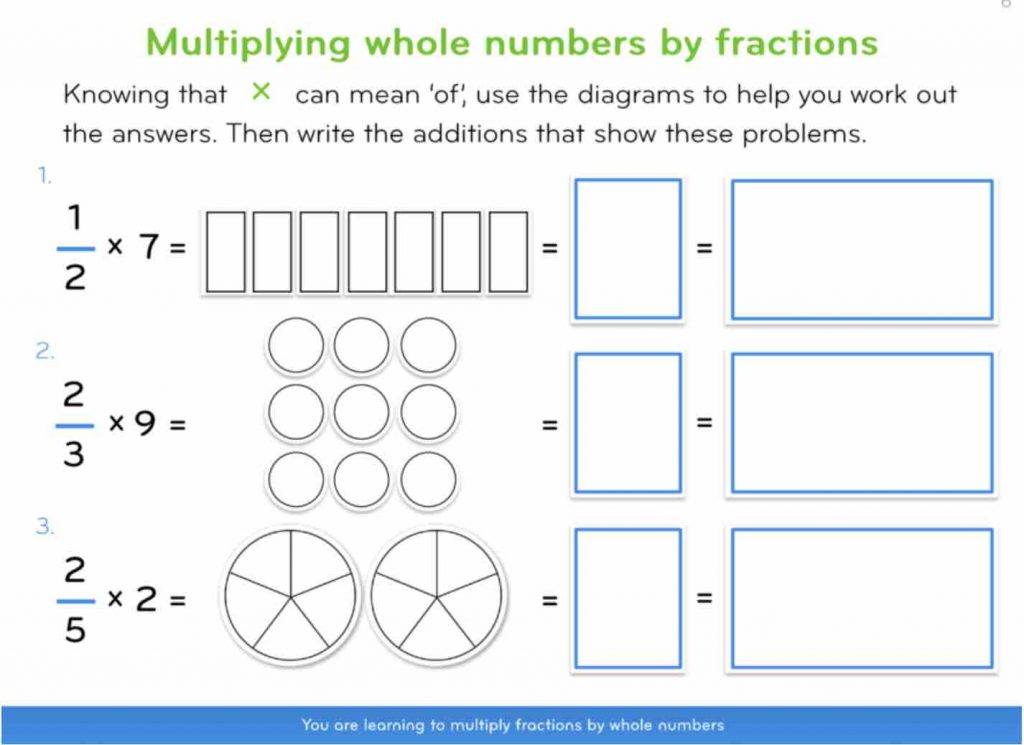
Tip 5: Explicitly highlight which parts of the lesson you are working on
This tip is specifically related to sharing screens or using online classroom software. Whether you’re working through a problem to demonstrate it, or working through it with a pupils, it can be easy to fall into the trap of covering it too quickly.
Thankfully this can be remedied relatively easily, especially if you’re already practising increased verbalisation.
Just as we might ask probing questions of pupils, we can ask questions to check that they’re following what we’ve just done.
However it’s even more effective to simply consciously slow down what we’re doing and find ways to highlight it.
Third Space Learning online maths tutors have access to a wide variety of e-learning tools to do this e.g. using a pen tool to underline/draw around certain words.
This way you can drive children to focus on the aspect of the lesson you want them to look at rather than the peripheral information.
Tip 6: Make use of the resources you have available when teaching online
There are plenty of online resources and interactive tools available to you now that you can’t use so easily in classrooms, so it’s worth making use of them.
One of the most difficult parts of teaching in the classroom is remembering everything you need to cover in a lesson.
It’s all too easy to focus on one issue for too long and realise at the end of the lesson that you have missed a key piece of information or maths skill, and covering it will take time away from whatever comes next.
Teaching online, you can refer to notes and prompts to yourself without issues. All Third Space Learning online maths lessons come with a set of teaching materials and tutor notes highlighting the major points to be covered, key vocabulary etc. In this way tutors always have a reference point if they feel they’re missing something.
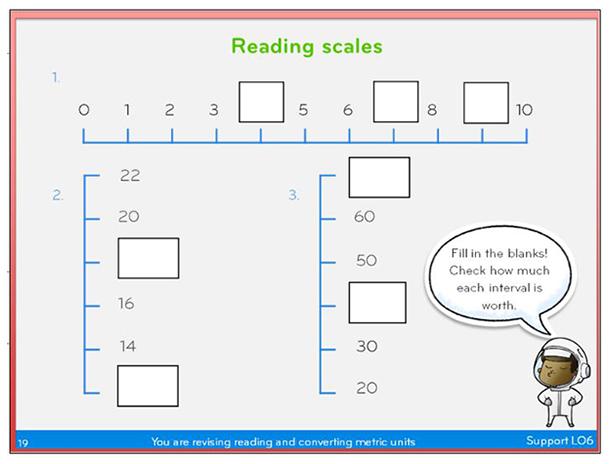
Similarly, we also include support slides with each of our lessons.
These additional slides provide tutors with fundamental parts of topics to direct pupils to if they’re struggling, without having to move away from the main focus of the lesson.
You can also do this by providing links to online versions of the sorts of concrete resources children might have access to in class like dienes, a place value grid (including decimals) or times table grid.
Once you’ve made the effort to do this once, then your slides will be online ready for any future lessons.
These additional slides provide tutors with fundamental parts of topics to direct pupils to if they’re struggling, without having to move away from the main focus of the lesson.
Adding additional slides to your own lessons might seem like extra work, but the benefits down the line will make the effort more than worth it!
Whether you’re on Zoom, Skype, Googlemeet, Microsoft Teams or using your own teaching platform like we do, we hope these tips can provide you with some additional ideas to consider. Ultimately this is just about all of us, parents, teachers, schools, children and education providers, doing our best to ensure that pupils are still able to learn during this challenging time for everyone.
If you’re looking for additional offline maths resources to supplement your interactive lessons Third Space Learning has created an entire new home learning strand of free resources in the online maths hub. Start here:
DO YOU HAVE STUDENTS WHO NEED MORE SUPPORT IN MATHS?
Every week Third Space Learning’s maths specialist tutors support thousands of students across hundreds of schools with weekly online maths tuition designed to plug gaps and boost progress.
Since 2013 these personalised one to one lessons have helped over 169,000 primary and secondary students become more confident, able mathematicians.
Learn how we can teach multiple pupils at once or request a personalised quote for your school to speak to us about your school’s needs and how we can help.

